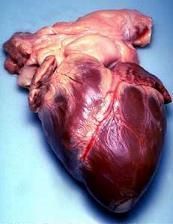Young At Heart: Researchers Identify A Protein That Could Help Treat Age-Related Heart Failure

Researchers may not yet know how to stop aging, but according to new research published today in Cell, they may have found a way to stop age-related problems in the heart. Two researchers at the Harvard Stem Cell Institute (HSCI) have identified a protein called GDF-11 that is present in larger amounts in the bodies of younger mice than in the bodies of older mice. When injected into the hearts of old mice, it reduced the thickness of the heart walls, resulting in hearts more similar to those in younger mice, Harvard says in a press release.
GDF-11, which is found in the blood of both mice and humans, may prove to be the key to a treatment for age-related heart failure. As of now, there are no drugs available to treat heart failure related to age, said HSCI co-director Doug Melton in the press release. "We need to work as hard as we can, to figure out if this discovery can be turned into a treatment for heart failure in our aging patients," he added.
The study's co-author Amy Wagers has shown in previous work that the blood of young animals can rejuvenate various tissues of older animals like the spinal cord and musculature. But because there are so many proteins and other compounds present in the blood, it has taken researchers four years from their first experiment to determine that there was indeed a measurable effect on the hearts of the older mice, and then to evaluate which protein was responsible, Harvard says.
GDF-11 belongs to a family of proteins called transforming growth factor-beta, or TGF-beta, proteins, which control several cellular functions like proliferation and differentiation, and have been implicated in immunity and conditions from cancer to Parkinson's disease. While some of these proteins have been extensively studied, GDF-11 is still relatively obscure, the press release adds.
The researchers are continuing with their work to further elucidate how GDF-11 works to rejuvenate the heart and perhaps other tissues, and estimate clinical trials of a GDF-11-based compound could start in four to five years.



























